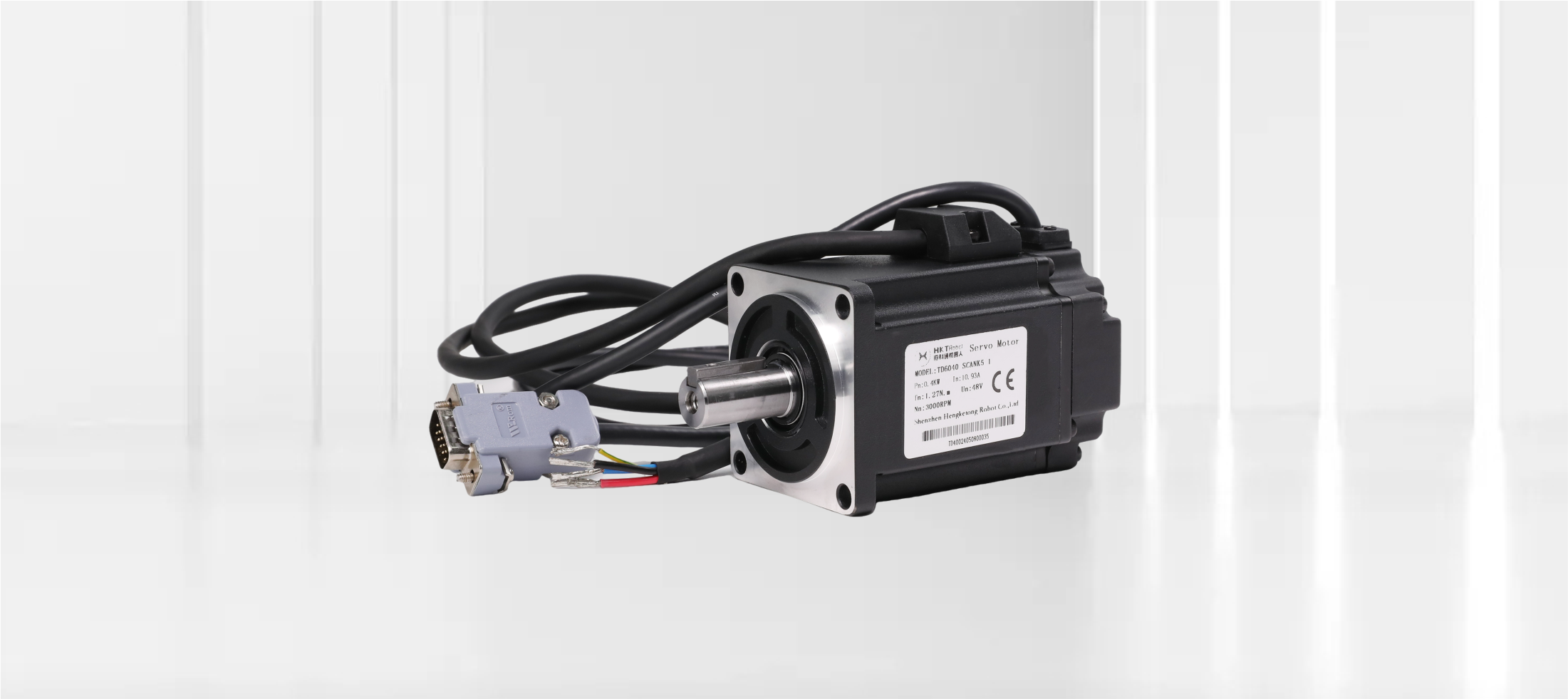Servo motors are key actuators in modern automation systems, providing precise positioning and rapid dynamic response through closed-loop control. Whether in industrial robots, AGVs, CNC machines, or automated production lines, proper servo motor selection is crucial for system performance and stability. This guide outlines a comprehensive methodology for selecting the right servo motor efficiently.
1. Core Concepts and Operating Principle
A servo motor uses feedback signals to maintain closed-loop control, ensuring accurate position, speed, and acceleration. Workflow: command input → control computation → output execution → feedback correction. Closed-loop control allows the motor to maintain precision under varying load conditions, minimizing overshoot and oscillation.
2. Three Key Parameters for Selection
-
Torque Calculation
-
Formula: T = 9550 × P / n (T: torque in N·m; P: power in kW; n: speed in rpm)
-
Application: Calculate the required torque based on the load, and determine the corresponding motor power.
-
-
Inertia Matching (Critical for Stability)
-
Principle: Ratio of load inertia (JL) to motor rotor inertia (JM) affects system response and stability.
-
Recommended: JL / JM ≤ 10 for general systems; ≤ 3 for high-precision systems. Poor matching may cause oscillation or slow response.
-
Calculation: JL = Σ(mass × radius²).
-
-
Power Evaluation and Safety Margin
-
Formula: P = T × n / 9550
-
Safety Margin: Apply 1.2–1.5× safety factor, and ensure peak power meets acceleration requirements.
-
3. Understanding Speed-Torque Characteristics
Servo motor performance is defined by its speed-torque curve:
-
Rated Torque: Continuous safe operating torque.
-
Peak Torque: Maximum torque for short-term acceleration or load changes.
-
Selection Guidance: Ensure normal operating point remains within rated torque, avoiding extended operation in critical regions.
4. Standardized Selection Process
A five-step process simplifies decision-making:
-
Load Analysis: Determine torque, inertia, and speed requirements.
-
Operating Conditions Assessment: Identify duty cycle, environmental conditions, and precision needs.
-
Parameter Calculation: Compute and verify torque, inertia, and power.
-
Safety Margin Design: Include an appropriate safety factor for reliability.
-
Economic Evaluation: Balance performance, cost, lifespan, and maintenance for optimal value.
5. Common Pitfalls and Optimization Tips
-
Avoid oversizing motors unnecessarily, which increases cost and energy consumption.
-
Prioritize inertia matching to ensure fast and stable response.
-
Consider environmental factors such as temperature, humidity, and protection class.
-
Customization: Motor length, rated power, and interface can be tailored for special loads or installation constraints.
Conclusion
Servo motor selection is a systematic process involving load analysis, parameter calculation, operating evaluation, and economic considerations. Proper selection enhances precision, responsiveness, and system efficiency, while reducing energy consumption and maintenance costs, ensuring reliable automation control.

Share:
Core Technologies of AGV Trajectory Simulation: Intelligent Path Control in Automotive Manufacturing Logistics
500kg–1000kg AGV Lifting & Rotating Module for Warehouse Robots